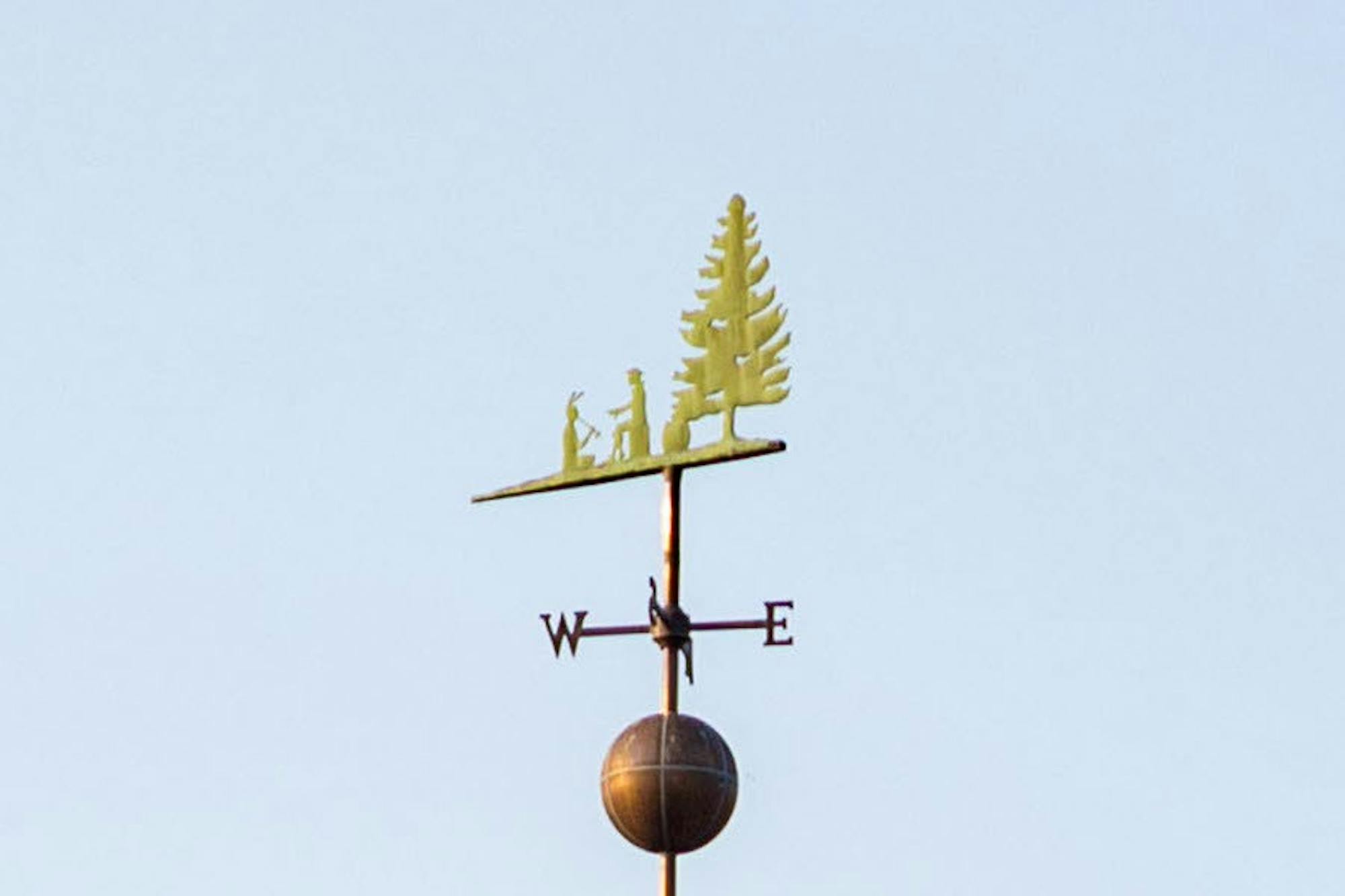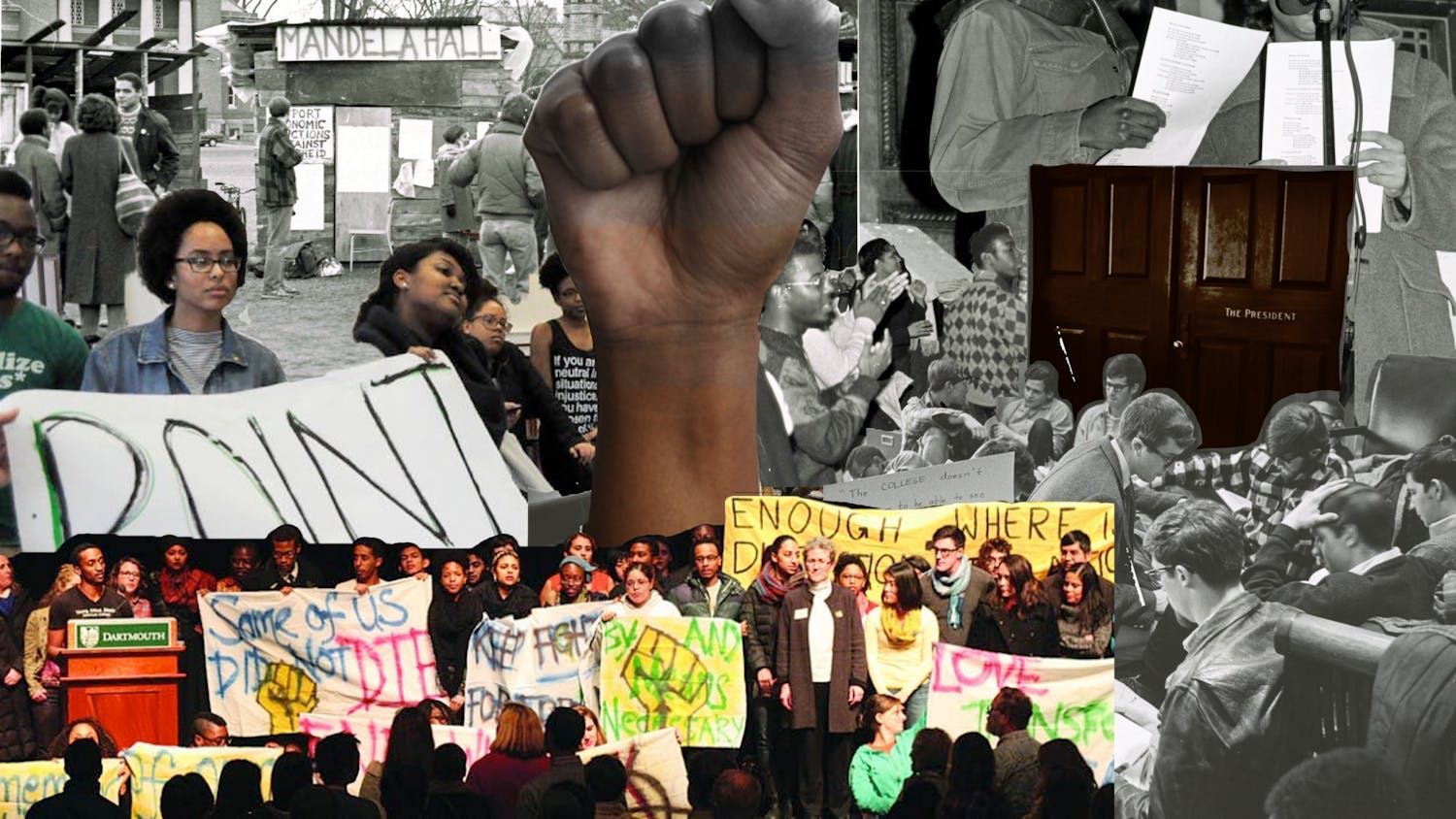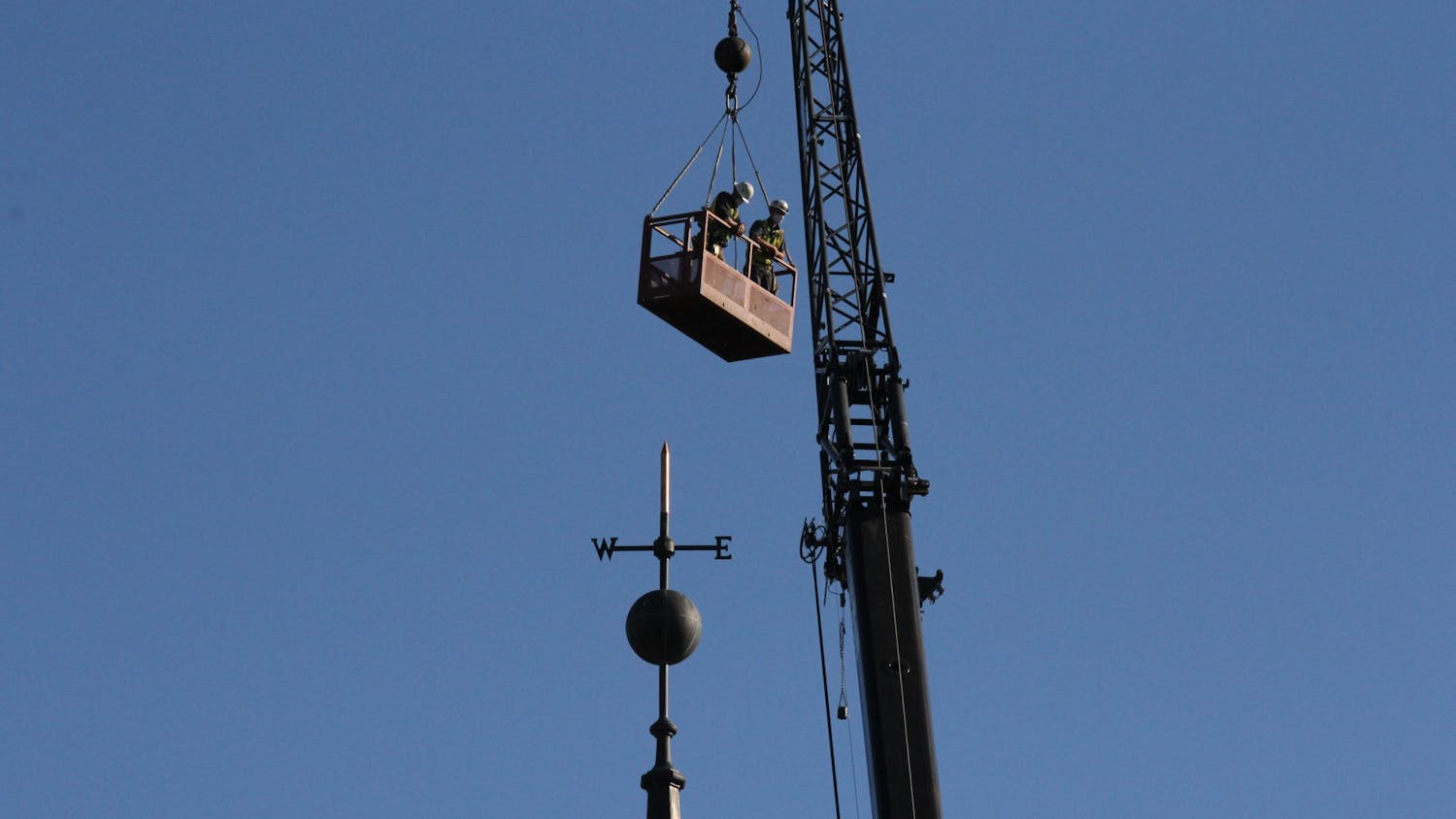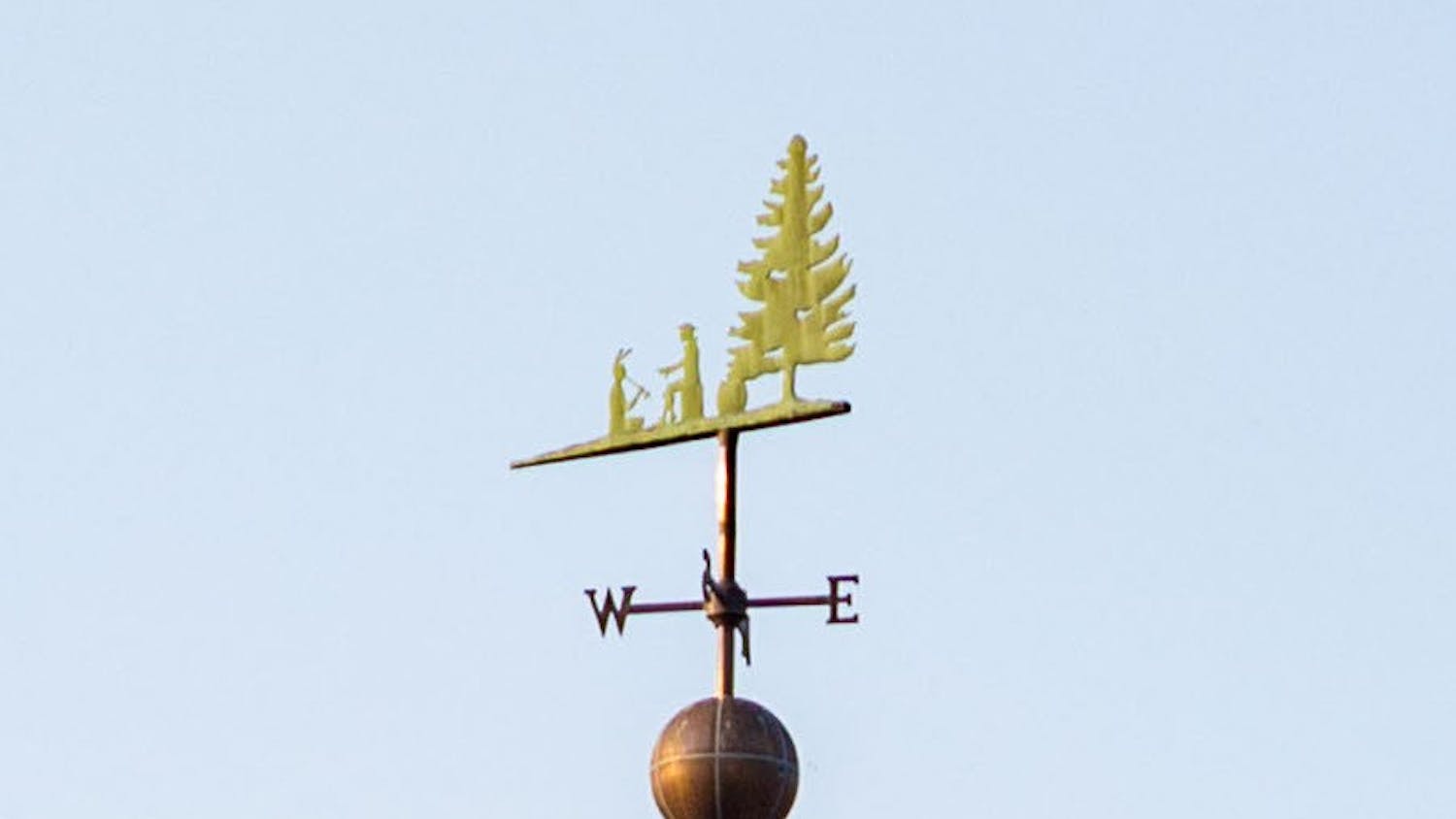This article is featured in the 2021 Winter Carnival special issue.
In the wake of a year marked by protests against racial injustice and police brutality, conversations have reemerged about what to do with controversial works of art — and more broadly, how institutions should confront their racist pasts.
Public monuments have played a central role in this latest wave of protests. For example, Black Lives Matter protesters toppled and painted over Confederate statues, and Indigenous activists have toppled monuments that they claim celebrate the extermination of Native Americans.
Dartmouth is no stranger to controversy surrounding art. Over the years, students criticized the Hovey Murals — a series of paintings depicting a myth of the College’s origin story featuring half-nude Native women and inebriated Native men — for representing Native Americans in a dehumanizing way. The murals, which were painted by Walter Beach Humphrey, Class of 1914, in 1938 and 1939, were moved from a closed room in the basement of the Class of 1953 Commons to an off-campus location in 2018.
Last summer, after calls from students, alumni and community members to remove the weather vane on top of Baker-Berry Library, College President Phil Hanlon stated that the vane contained an offensive image of a Native American and did “not reflect Dartmouth’s values.” The weather vane, which depicted a Native American smoking a pipe and wearing feathers while sitting on the ground in front of Dartmouth's founder, Eleazar Wheelock, and what appears to be a barrel of rum, has since been removed.
A petition to take down the weather vane, which garnered over 800 signatures, stated that it was symbolic of “the degradation and annihilation of Native Americans by white colonists” and “the plight alcoholism and drug addiction played in the stealing of Native lands to found Dartmouth College.”
However, some have argued that the weather vane’s removal was not necessarily warranted.
“I wish that there had been some discussion about the weather vane,” said art history professor Steven Kangas, who questioned whether enough research was done on the historical context of the weather vane’s imagery before its displacement. Kangas said he believes that the artist’s decision to portray Wheelock sitting above the Native American was meant to establish a “hierarchy” in the same sense as “authority in the classroom,” rather than ancestry or race.
“Of course, to argue this would probably place you in a category that is considered not progressive enough,” Kangas said.
The library and the Hood Museum of Art have also decided to remove an edition of the sculpture “Appeal to the Great Spirit,” that currently sits in the center of the Tower Room in Baker-Berry Library. The original sculpture sits in front of the Museum of Fine Arts in Boston. Created by Cyrus Edwin Dallin, a white sculptor, “Appeal” shows a Native American riding on a horse with his arms outstretched and looking up towards the sky.
Taylor Rose Payer ’15, Hood Museum cultural heritage and Indigenous knowledges fellow and member of the Turtle Mountain Band of Chippewa, said that she thinks the sculpture “just looks like the most tragic Native thing ever.”
Payer elaborated that works by non-Native artists, such as “Appeal,” project harmful messages about Native people because they imply that “Natives are vanishing, or they’re not going to survive, so we have to take their photographs or make art about them or take art, in a lot of cases, in order to study them.”
In the future, the Hood Museum intends to replace “Appeal” with a piece made by a Native artist, according to Payer.
Broader discussions about art and artifacts at the College are also underway. A working group consisting of students, alumni and faculty is in its preliminary stages and has met twice so far to start a dialogue about the art around campus, according to art history professor and working group co-chair Mary Coffey.
Coffey explained that the group has discussed two of its aims thus far, one of which is a “historical accountability project” examining “how the College represents its own history,” and another is the evaluation of whether or not these representations reflect the College’s aspirations for “inclusion and diversity” going forward.
“It’s not fundamentally a committee about removal,” Coffey said. “That is, the core question at the heart of what we’re trying to do is not, ‘Let’s go around and take things down.’ The idea here is to actually articulate and concretize our values, priorities and aspirations, so that when we’re faced with a decision about getting a new work of art, or naming a building or designing an interior, we have something to look at to help guide that process.”
Payer said that decisions on how to handle racist art “should be up to the communities that [the art] most directly impacts.”
“If it comes to some sort of problematic thing that is impacting Native people, then Native people need to be able to decide what happens with it to some extent,” Payer said. “You can’t make that decision for the Native people.”
Coffey affirmed that the decisions of the working group will involve “reaching out and dialoguing with all kinds of constituencies.” Furthermore, they will write “recommendations and guidelines that will be made public and given to the administration,” which will then decide whether or not to act on them.
Payer argued that while some Native American art created or collected by non-Native people can be “educational,” it is always wrong for artists to represent Native American stories in racist, inaccurate or obsolete ways. She cited ethnologist Edward Curtis’s famous photographs of Native Americans from the early 20th century as “responsible for a lot of the stereotypes we have about Native people.” Curtis often staged photographs and used props to make it seem like they were “more ancient or more backwards” than they actually were.
Currently, the Hood Museum has an exhibition that was created in response to Curtis’s photographs. Photographers Will Wilson, of the Diné, or Navajo Nation, and Kali Spitzer of the Kaska Dena took tintype images of Dartmouth community members and put them on display as an example of Native people reclaiming their narratives.
Hood Museum director John Stomberg confirmed that the museum is considering how to deal with issues of race and representation in art.
“Who gets to be heard? That’s the question we ask ourselves all the time, and we are working to make sure a real, true diversity of voices are heard through the artworks that we show at the Hood,” Stomberg said.
Although the Hood Museum is currently closed to visitors due to COVID-19, it is offering virtual online programming that allows students to experience its exhibitions remotely.
“My goal, frankly, is that every student at Dartmouth finds themselves or their heritage reflected at the Hood,” Stomberg added. If you’re a first-generation student from Argentina, there should be something at the Hood that speaks of home to you –– if not every day, at least some days.”
For Native Americans and other minority groups, the road to change has been long –– not only nationwide, but also at the College. Native American students and others protested Dartmouth’s “Indian” mascot until the College abandoned it in 1974. Students have also confronted anti-Black racism throughout the College’s history, and activism around racial justice continues on campus today.
According to Payer, one solution may be redefining the ways we teach and learn about art.
“Maybe show [the artifact] and say, ‘This is the history of racist attitudes at this time,’” Payer said. “And in that story, you can then tell that Native activists, Native students, Native community members asked for it to be removed, and let that be part of the education of the piece.”
Stomberg added that keeping these objects in museum collections or libraries with the intent to learn from them can be “just the right thing to do.”
“Every institution in this country that has been around as long as Dartmouth has objectionable material, has objectionable stories in their past, and it’s all in how we deal with it,” he said. “Do we try to sweep it under the rug and deny it, or do we face it? And in facing it, change the future. So, that’s what I hope we are doing.”
Correction appended (Feb. 12, 2021): A previous version of this article stated that Payer is a member of the Chippewa tribe. The article has been updated to reflect that Payer is a member of the Turtle Mountain Band of Chippewa.
Kristin Chapman ’24 is an English major and Spanish minor from Rye, New York. She currently serves as the editor-in-chief and previously wrote and edited for the News section. In her free time, she enjoys reading books, running, hiking and doing yoga.




